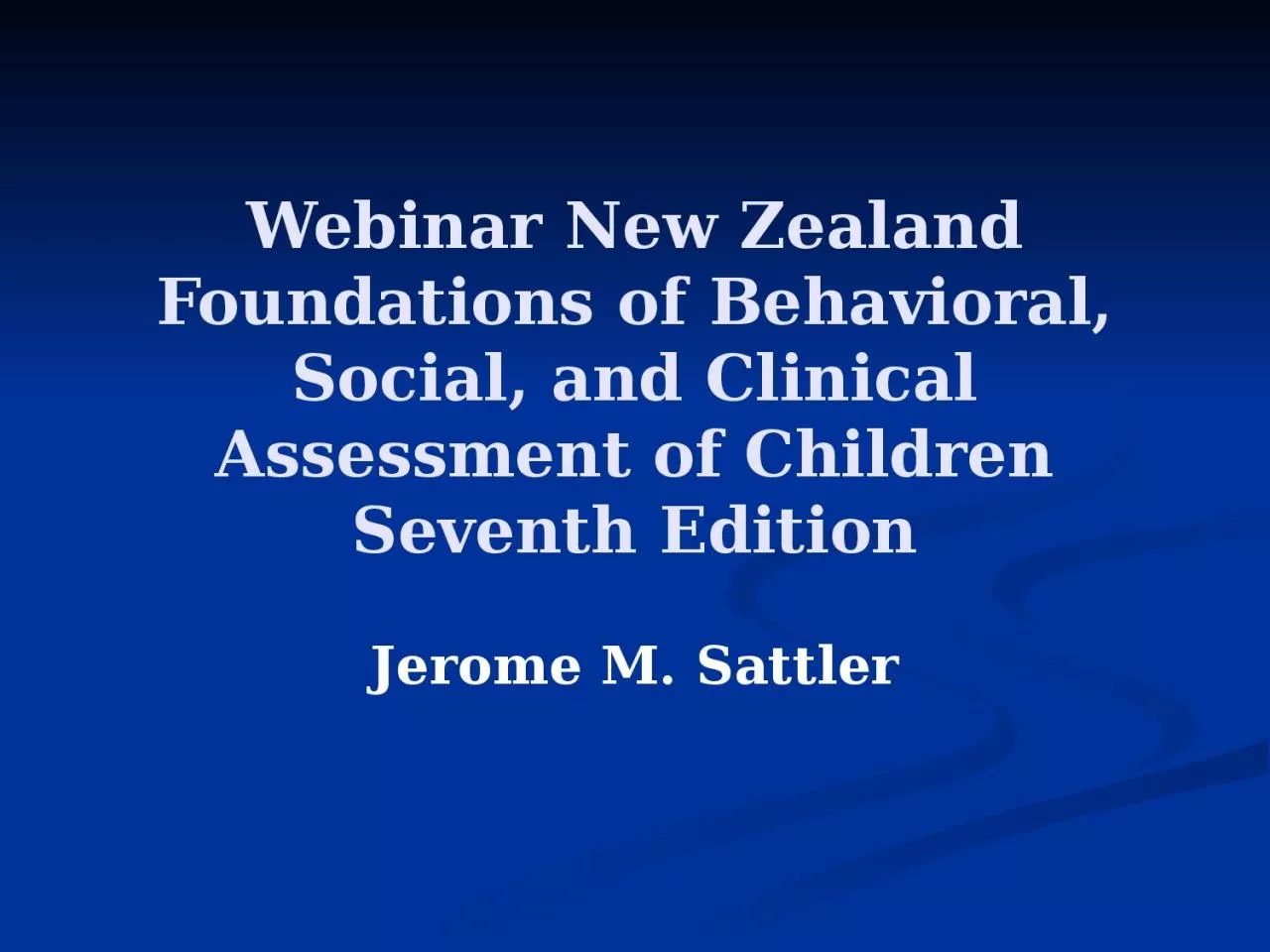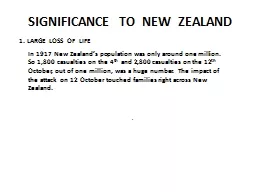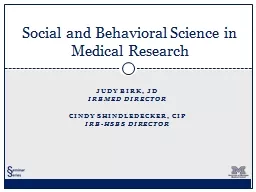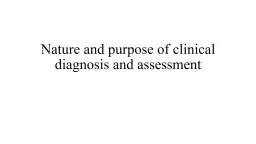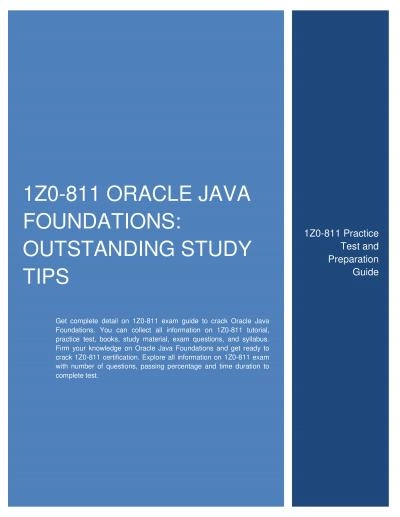PPT-Webinar New Zealand Foundations of Behavioral, Social, and Clinical Assessment of Children
Author : quinn | Published Date : 2024-03-13
Seventh Edition Jerome M Sattler Introduction to COVID19 1 The COVID19 pandemic can have serious consequences for children parents and their families Measures
Presentation Embed Code
Download Presentation
Download Presentation The PPT/PDF document "Webinar New Zealand Foundations of Behav..." is the property of its rightful owner. Permission is granted to download and print the materials on this website for personal, non-commercial use only, and to display it on your personal computer provided you do not modify the materials and that you retain all copyright notices contained in the materials. By downloading content from our website, you accept the terms of this agreement.
Webinar New Zealand Foundations of Behavioral, Social, and Clinical Assessment of Children: Transcript
Download Rules Of Document
"Webinar New Zealand Foundations of Behavioral, Social, and Clinical Assessment of Children"The content belongs to its owner. You may download and print it for personal use, without modification, and keep all copyright notices. By downloading, you agree to these terms.
Related Documents

